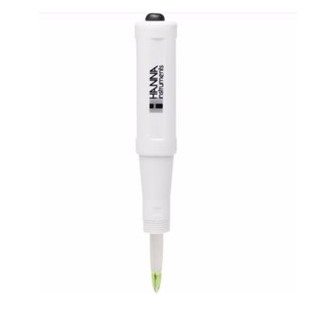Why TikTok is unique and why other social networks are trying to copy it

The 22-second video, recorded “just to make someone smile,” turned the life of a 37-year-old American and revived a 90-year-old company. On September 25, 2020, Nathan Apodaka filmed a tiktok of himself riding a skateboard while drinking Ocean Spray cranberry-raspberry juice to Fleetwood Mac's "Dreams". In just a few days, the video gained 20 million views, and a year later the counter has already exceeded 80 million users. The juice company's stock rose, Fleetwood Mac hit the top spot on iTunes, and Nathan bought his first house with the money he made.
This is a real story from TikTok, and something like this happens here all the time.
What is TikTok and why is it so popularTiktok is owned by Chinese conglomerate ByteDance, which developed the Douyin app in 2016. It was supposed to compete with the then popular Musical.ly service, created to record lipsync (lipsync, video with lip sync to music). In late 2017, ByteDance acquired Musical.ly, merged the two apps into TikTok, and launched it in the US . CHINA has its own version of the app, and its users do not have access to international TikTok.
Already in 2018, TikTok surpassed FACEBOOK, Instagram (both social networks have been banned in RUSSIA since March 21, 2022 by a COURT decision), Snapchat and YouTube in terms of the number of monthly downloads in the US AppStore. By the fourth quarter of 2021, the app had been downloaded over 3 billion times.
TikTok not only gets more downloads than other apps, it also gets more time. Users spend an average of 46 minutes a day watching TikTok. By comparison, Instagram users spend an average of 28 minutes a day, 11 minutes on YouTube, 33 minutes on Facebook, and 30 minutes on Snapchat.
In addition, 90% of users visit TikTok more than once a day.
TikTok attracts users due to the fact that the content in it is fun and dynamic. In essence, the purpose of a TikTok video is to capture the attention of viewers within the first few seconds so that they stop scrolling through the video feed. This is clearly seen in the example of posting ads: over 60% of the highest CTR videos grab the user's attention to the main story within the first 3 seconds, despite the fact that the possible duration of the video in the application is constantly increasing. Initially, TikTok only lasted 15 seconds, but after a while, the developers increased the maximum duration to 60 seconds. In July 2021, the social network announced the gradual introduction of three-minute videos, and in August it was testing five-minute videos.
The success of the application was also influenced by the fact that TikTok videos are easy to create and edit thanks to a huge number of built-in tools. And hashtags and challenges motivate users to create content themselves.
TikTok is also popular due to the absence of barriers to video virality: any user's video can become popular, regardless of the number of its subscribers. This is possible thanks to a special algorithm.
Social economy How the algorithms of the Chinese social network TikTok work How TikTok Algorithms Work
The great thing about TikTok, which made the incredible success stories of unknown users possible, is that the algorithm does not base recommendations on the number of subscribers of the video author or on the effect of his previous TikTok. This means that a rookie video has just as much chance of being recommended by other users as a celebrity video.
But when making recommendations, the algorithm takes into account other factors: which posts the user likes and which he creates himself, which search queries he enters, in which country he lives, and so on. A strong indicator of interest (such as if users watched a long video from start to finish) carries more weight than a weak indicator (say, whether the viewer and creator of the video are in the same country). So users get a variety of content and discover new promising authors.
Therefore, anyone who is able to adapt their content to the short video model can become popular on TikTok. How to do it right?
Social economy TikTok business: how millions are made on simple videos Features of promotion in TikTok
You can promote your content on TikTok, taking into account the principle of the algorithm, if:
Create short videos: this will increase the chances that they will be watched to the end. Shoot video in the correct format: 9:16 vertically. Make music an integral part of videos: 88% of TikTok users confirmed that the soundtrack of videos is important to them. It is better if the music is fast. Overlay short informative text to make the story more visual. Come up with a captivating caption. Use popular hashtags, effects and music: this affects the visibility of tiktok. Find your “subculture” that unites TikTokers by interests using hashtags. For example, #momsoftiktok for parenting tips, #egirl for trendy clothes and bright makeup, #fittok for fitness classes. Actively interact with other people's content. Likes and comments under other authors' TikToks provide a higher rating for the active user's content. Add videos at the right time when the audience is most active. Access to reports is open to users with a paid account. Do not delete archived videos. The algorithm is designed so that even an old ineffective video can become viral.The easiest way to hook your audience on TikTok is through original, memorable posts. For example, clothing brand ZALORA launched a contest under the hashtag #ZStyleNow: you need to show the letter Z with your fingers, and then instantly change the outfit. Bonus from the company for the best video - $200. In total, the video has been viewed a million times, and more than 1,000 users have entered the contest. The click-through rate was 19.75%.
Dressing up challenge #ZStyleNow from clothing brand ZALORA (Photo: wersm.com) Platforms with similar Instagram Reels mechanics
In 2019, US users spent an average of 12.8 hours per month on TikTok and just 7.1 hours on Instagram. In 2020, these figures were 21.5 hours versus 7.5 hours. To compete with TikTok and win back an audience, Instagram launched a similar format in 2020 called Reels. The platforms have different principles of operation: for example, Reels has a more complex interface and limited functionality: it lacks some video editing functions.
In addition, TikTok is attracting younger users. The recommendation algorithm is also different.
To clearly demonstrate the differences in the work of the TikTok and Reels algorithms, the Hootsuite editors conducted an experiment: they posted five identical videos on new accounts without subscribers at the same time without signatures and hashtags. The experiment showed that TikTok promotes the content of a user who does not have his own audience better: the maximum video views in Reels is 2, while in TikTok each video received more than 450 views and several likes, and the account gained subscribers.
LikeeSingapore's leading global video platform Likee is one of TikTok's biggest competitors. The apps launched at the same time, but Likee has not gained such popularity: it has 150 million monthly active users. However, Likee is aimed at an audience aged 10–20, so there are strict rules here, for violation of which administrators send users to a ban. The target audience of TikTok is people 15-25 years old.
Likee competes with TikTok through various blog monetization methods, such as earning money for watching videos or liking posts.
YouTube ShortsIn August 2020, TikTok overtook YouTube in the US for the first time in the amount of time users spent on the app in a month: 24 hours on TikTok versus 23 hours on YouTube. In the UK, by that time, the gap was even greater: 23 hours versus 17 hours. YouTube foresaw the course of events and prepared a decisive rebuff in the form of Shorts. It differs, for example, in that YouTube has no blocking issues, while TikTok is banned, for example, in India and Pakistan.
The launch of Shorts began just in India. For the year, the number of views on the service exceeded 15 billion.
TikTok and Shorts are quite different from each other. For example, TikTok offers a huge library of filters, while Shorts only has a basic brightness and tone editor. The "Private" option in Shorts allows you to choose who can watch the video (a similar option in TikTok makes the video available only to the creator). Shorts videos can be disliked, which can't be done with tiktok.
VK clipsTikTok first surpassed VK in terms of time spent on the app by iOS users back in the summer of 2020. At the same time, VK launched its analogue of short videos called Clips.
The main difference between Clips is the use of machine learning technologies and AR mode. This allows you to apply filters with which the user can, for example, disperse the clouds with his hands. Celebrities were attracted to participate in the first clips. In the first month of operation, the new service has collected 3 billion views from 44 million people.
Also, Gazprom-Media plans to create its own analogue of TikTok in Russia. The Yappy app will be aimed at Russian bloggers under the age of 35 and will appear, presumably, before 2022.
"Import substitution in the IT sector" - a selection of RBC Pro How Companies Promote themselves on TikTok
The high average engagement of TikTok users in content guarantees fast promotion of interesting videos. Therefore, more and more brands are entering TikTok with their products. To work with brands, there is the TikTok For Business platform.
To make brand pages as interesting as personal pages, companies share fun facts about the team and behind the scenes of their work.
There are many ways to communicate your brand to a wider TikTok audience. Here are some of them:
Challenges: you can participate in existing ones or come up with your own. For example, fast food restaurant Chipotle runs contests with funny videos. Their Halloween dress up contest brought the company 4 billion views. Collaborations with bloggers: mentioning the brand on their channels or sharing a video on the company page. So, under the hashtag #THE1Challenge, BMW released a series of videos in which famous tiktokers dance in new cars, around them and even on them. Each video has been viewed more than 7 million times. Direct video advertising that leads to a website, application or account in other social networks. Let's say Levi's uses a "Buy Now" button on its videos, which doubled the views of the related products on the brand's website.


























































